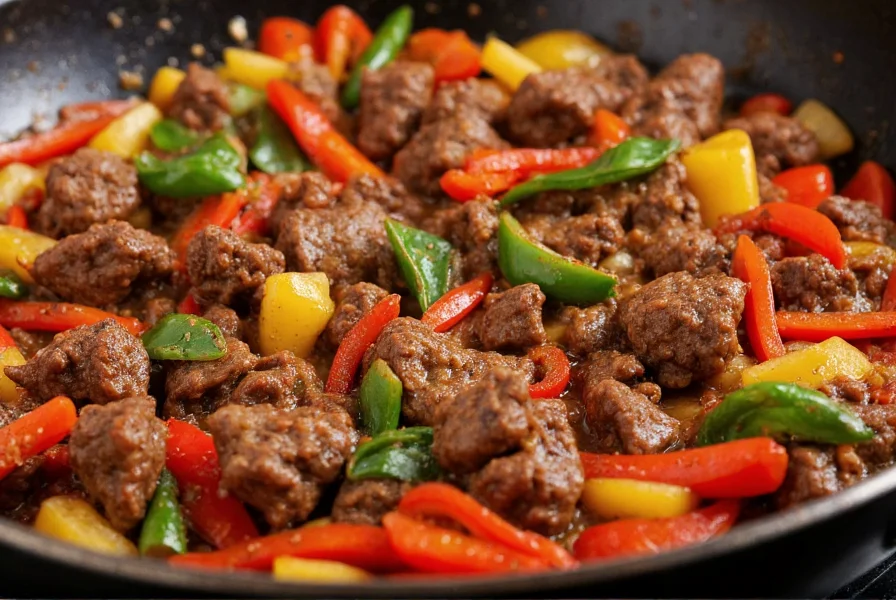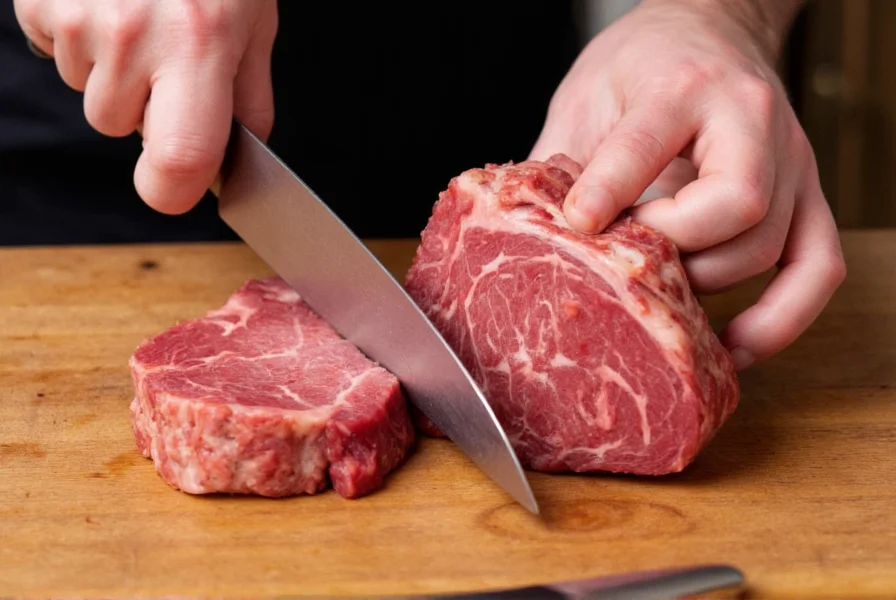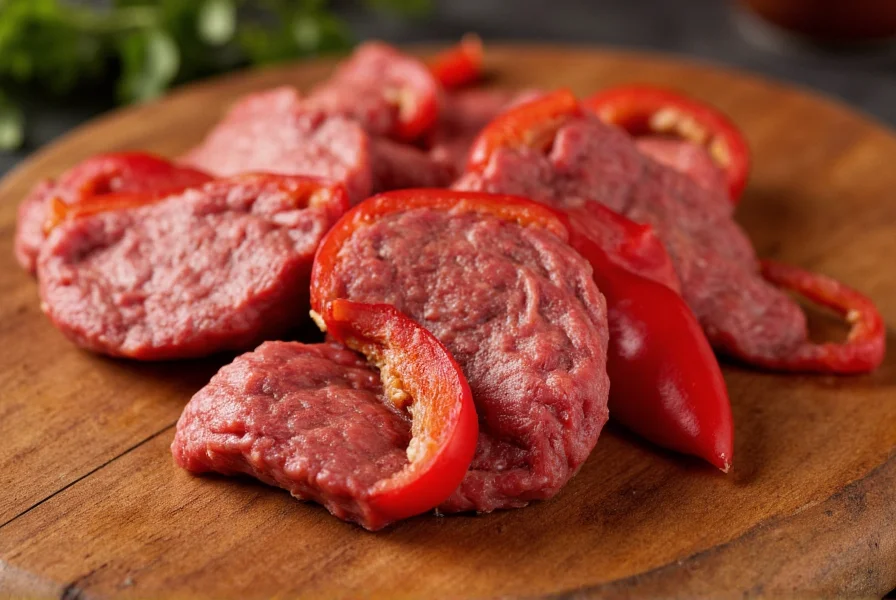The Ultimate Guide to Perfect Pepper Beef
Pepper beef remains one of the most beloved Chinese-American dishes, yet many home cooks struggle to replicate restaurant-quality results. Understanding the proper technique transforms this simple stir-fry from rubbery disappointment to tender perfection.Understanding Authentic Pepper Beef Origins
While Western versions emphasize bell peppers, traditional Chinese pepper beef (黑椒牛柳) relies on freshly cracked Sichuan or Chinese black pepper for its signature flavor. The dish originated in Cantonese cuisine, where chefs mastered the velveting technique to protect delicate beef proteins during high-heat cooking. This method explains why restaurant versions maintain remarkable tenderness despite brief cooking times.Essential Ingredients for Authentic Flavor
Selecting proper ingredients makes the difference between ordinary and exceptional pepper beef:| Component | Critical Elements | Common Mistakes |
|---|---|---|
| Beef Selection | Flank steak or sirloin, sliced 1/4" thick against grain | Using stew meat or improper slicing direction |
| Marinade Base | Egg white, cornstarch, Shaoxing wine, baking soda | Omitting velveting ingredients |
| Pepper Profile | Freshly cracked black pepper (Chinese preferred) | Using pre-ground pepper or bell peppers only |

Step-by-Step Cooking Technique
Proper beef preparation requires attention to detail. Freeze the steak for 30 minutes before slicing to achieve paper-thin cuts. Combine 1 pound beef with 1 tablespoon cornstarch, 1 egg white, 1 teaspoon baking soda, and 2 tablespoons Shaoxing wine. Massage gently for 2 minutes, then refrigerate for 30 minutes. This velveting process creates a protective coating that prevents toughness during stir-frying. The critical stir-fry sequence follows precise timing:- Heat wok until smoking, add 2 tablespoons peanut oil
- Quick-fry beef in single layer for 60 seconds, remove immediately
- Add 1 sliced onion and 2 minced garlic cloves, stir 30 seconds
- Return beef, add 3 tablespoons sauce (soy, oyster sauce, sugar, broth)
- Add 2 tablespoons freshly cracked black pepper
- Toss 60 seconds until glossy coating forms
Western Adaptation: Bell Pepper Variations
Many American-Chinese restaurants incorporate bell peppers, creating what's technically "beef with peppers" rather than authentic pepper beef. For this version, use equal parts red, yellow, and green bell peppers cut into 1" strips. Add them after the aromatics and stir-fry 2 minutes before returning the beef. The key is maintaining crisp-tender texture—overcooked peppers turn mushy and lose vibrancy.Avoiding Common Pepper Beef Mistakes
Home cooks frequently encounter these issues:- Waterlogged beef: Pat meat completely dry before marinating
- Clumped ingredients: Use high smoke-point oil and don't overcrowd wok
- Bland flavor: Bloom black pepper in hot oil before adding liquids
- Soggy texture: Thicken sauce with cornstarch slurry only at final stage

Serving and Storage Recommendations
Serve immediately over steamed jasmine rice to absorb the flavorful sauce. For meal prep, store components separately—beef in airtight container, sauce in separate vessel. Reheat using the water bath method: place container in simmering water for 3 minutes, then finish in hot wok with 1 teaspoon oil to restore texture. Properly stored, components maintain quality for 3 days refrigerated or 2 months frozen.Nutritional Profile and Dietary Adaptations
A standard 6-ounce serving provides approximately 320 calories, 28g protein, and 15g fat. For healthier versions:- Reduce sodium by using low-sodium tamari
- Boost vegetables with sliced mushrooms or snap peas
- Create gluten-free versions with coconut aminos
- Add metabolic boost with fresh ginger and chili flakes
Perfecting Your Pepper Beef Technique
Mastering this dish requires attention to the Maillard reaction—those golden-brown bits that develop flavor. The sizzle should be constant but not violent; if ingredients steam instead of fry, your wok isn't hot enough. Remember that carryover cooking continues for 2 minutes after removal from heat, so undercook slightly for perfect final texture.Frequently Asked Questions
What's the best cut of beef for pepper beef stir-fry?
Flank steak or top sirloin are ideal. Flank steak offers rich flavor but requires careful slicing against the grain. Sirloin provides more consistent tenderness. Both should be partially frozen before slicing to 1/4-inch thickness for optimal texture during quick cooking.
Why does my homemade pepper beef turn out tough?
Toughness usually results from improper preparation or cooking. Common causes include: not slicing against the grain, skipping the velveting marinade (cornstarch/egg white), overcrowding the wok causing steaming instead of frying, or overcooking beyond 90 seconds. Properly marinated and sliced beef should cook in 60-90 seconds total.
Can I make pepper beef without a wok?
Yes, but use the heaviest skillet available (cast iron preferred) and ensure proper preheating. Heat oil until shimmering but not smoking. Work in batches to maintain high temperature, and avoid stirring too frequently to allow proper searing. The critical factor is maintaining 400°F+ surface temperature throughout cooking.
How do I prevent my pepper beef sauce from being too watery?
Prevent watery sauce by: 1) Using cornstarch slurry (1:1 ratio with cold water) added at the very end, 2) Reducing liquids by 25% in the recipe, 3) Ensuring beef is thoroughly patted dry before cooking, and 4) Cooking sauce uncovered for final 60 seconds to evaporate excess moisture. The sauce should coat the back of a spoon when properly thickened.











 浙公网安备
33010002000092号
浙公网安备
33010002000092号 浙B2-20120091-4
浙B2-20120091-4